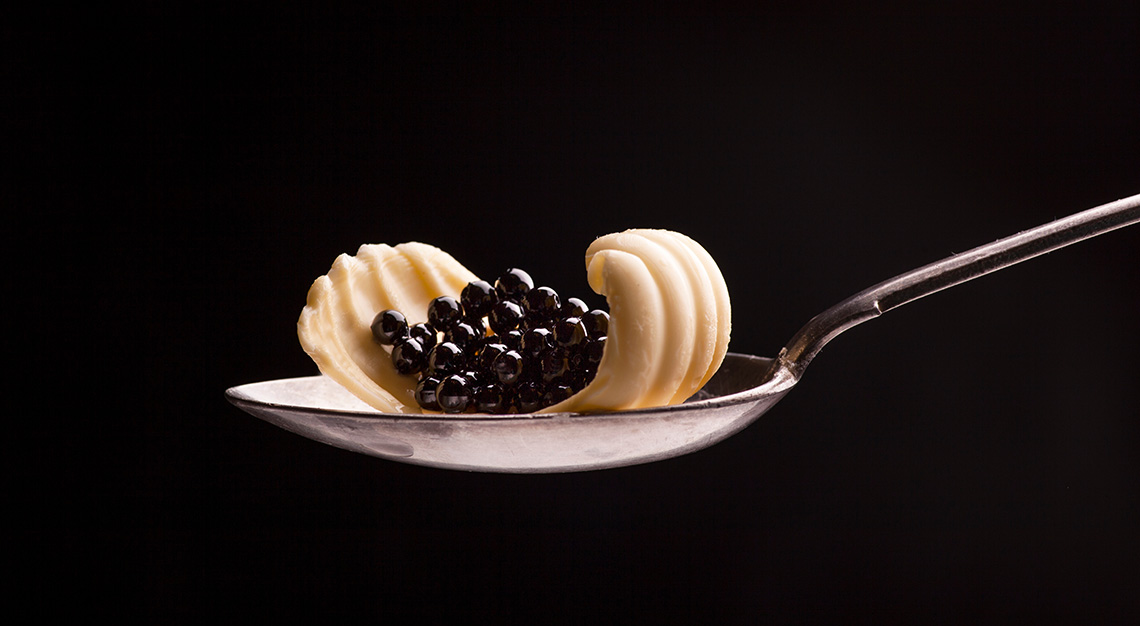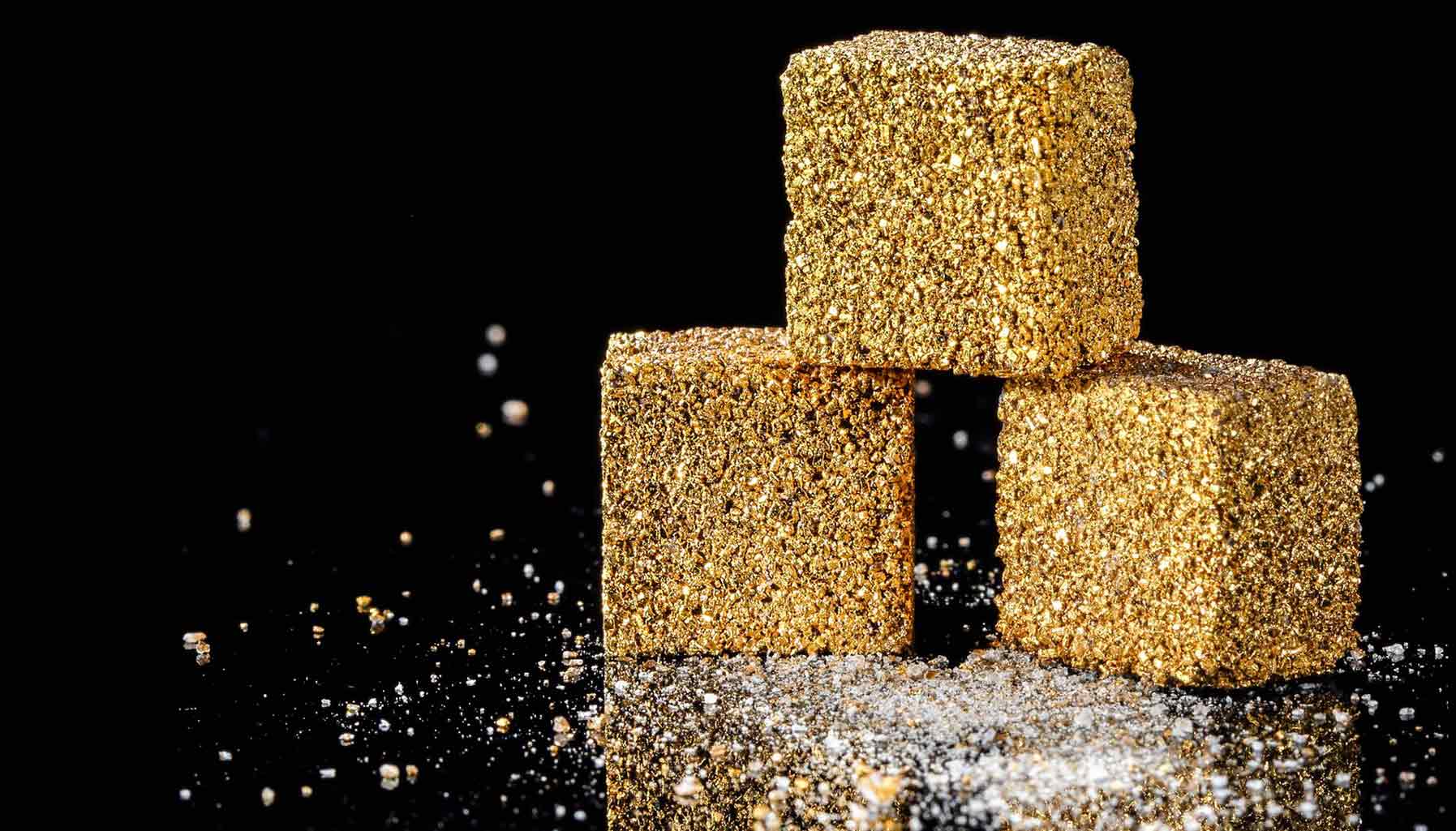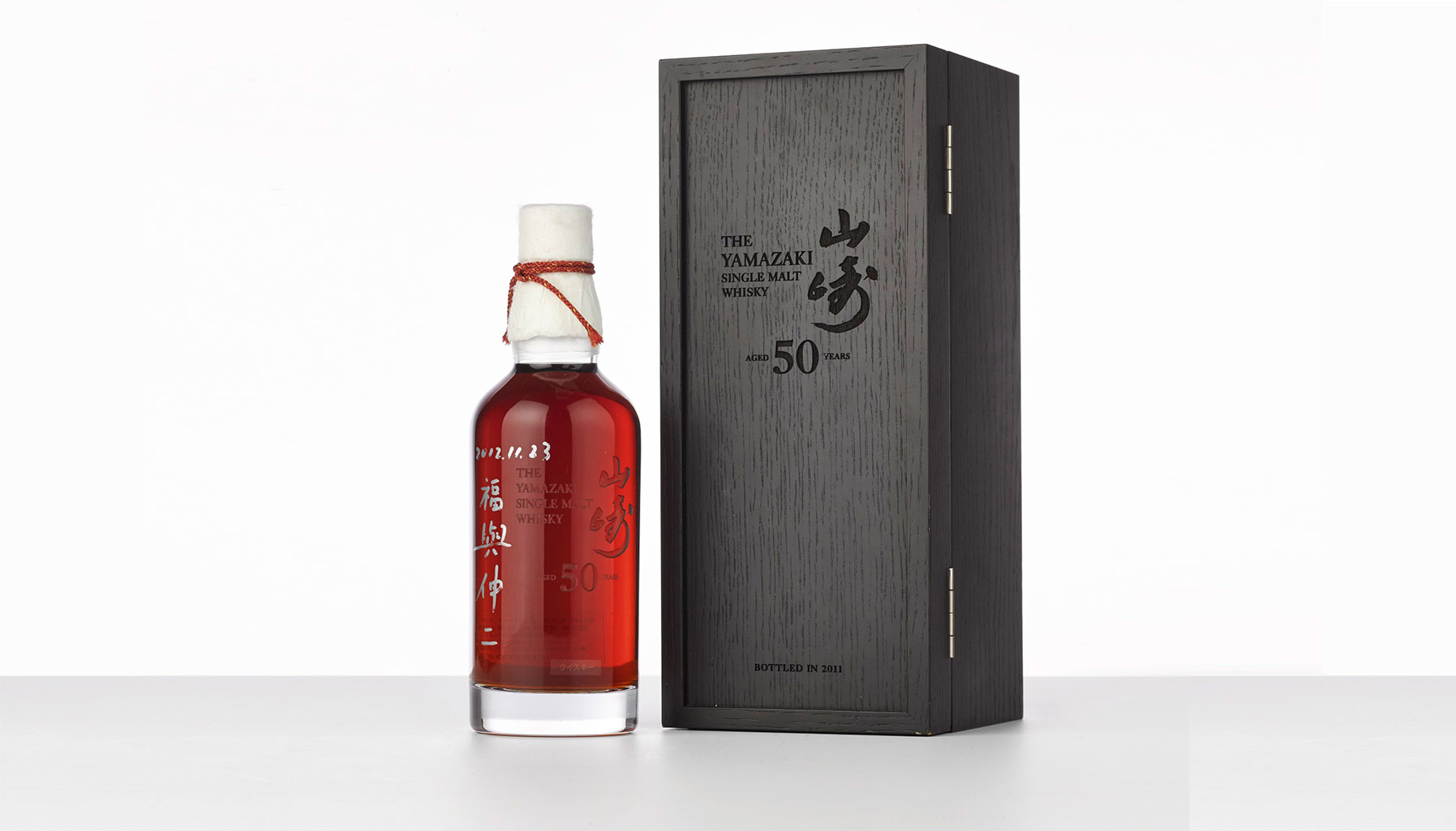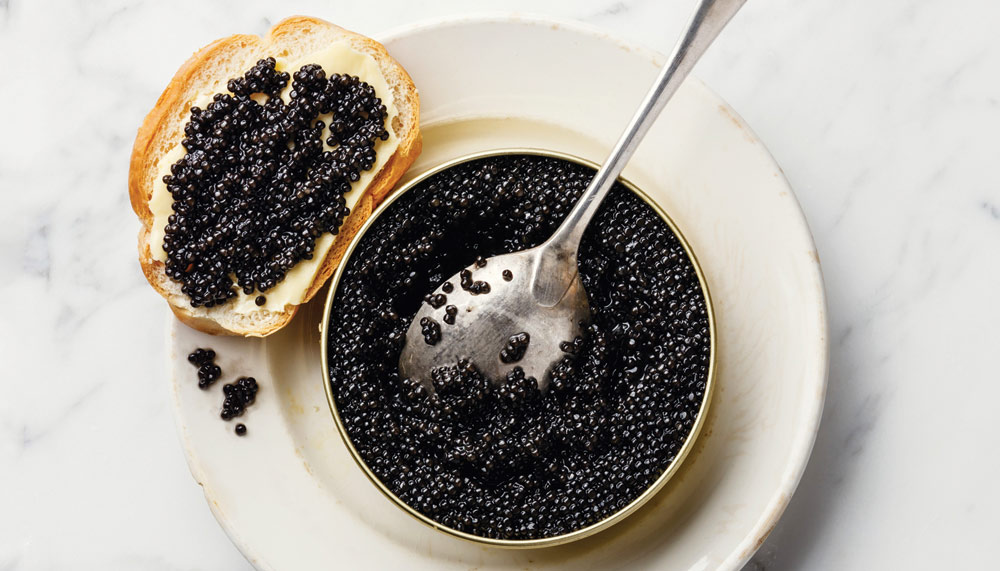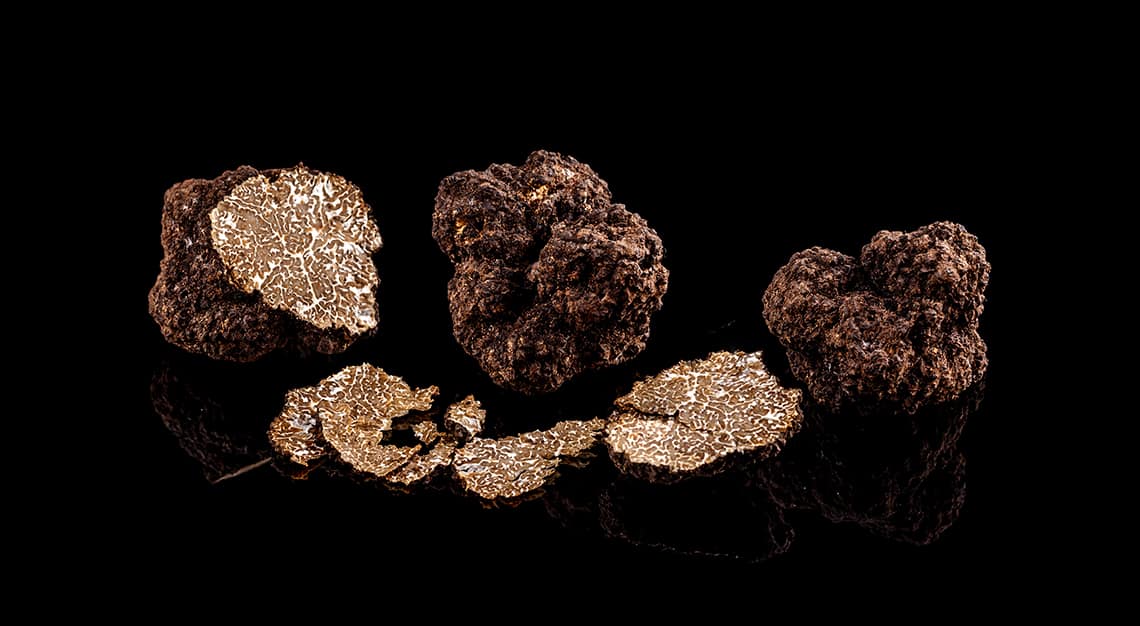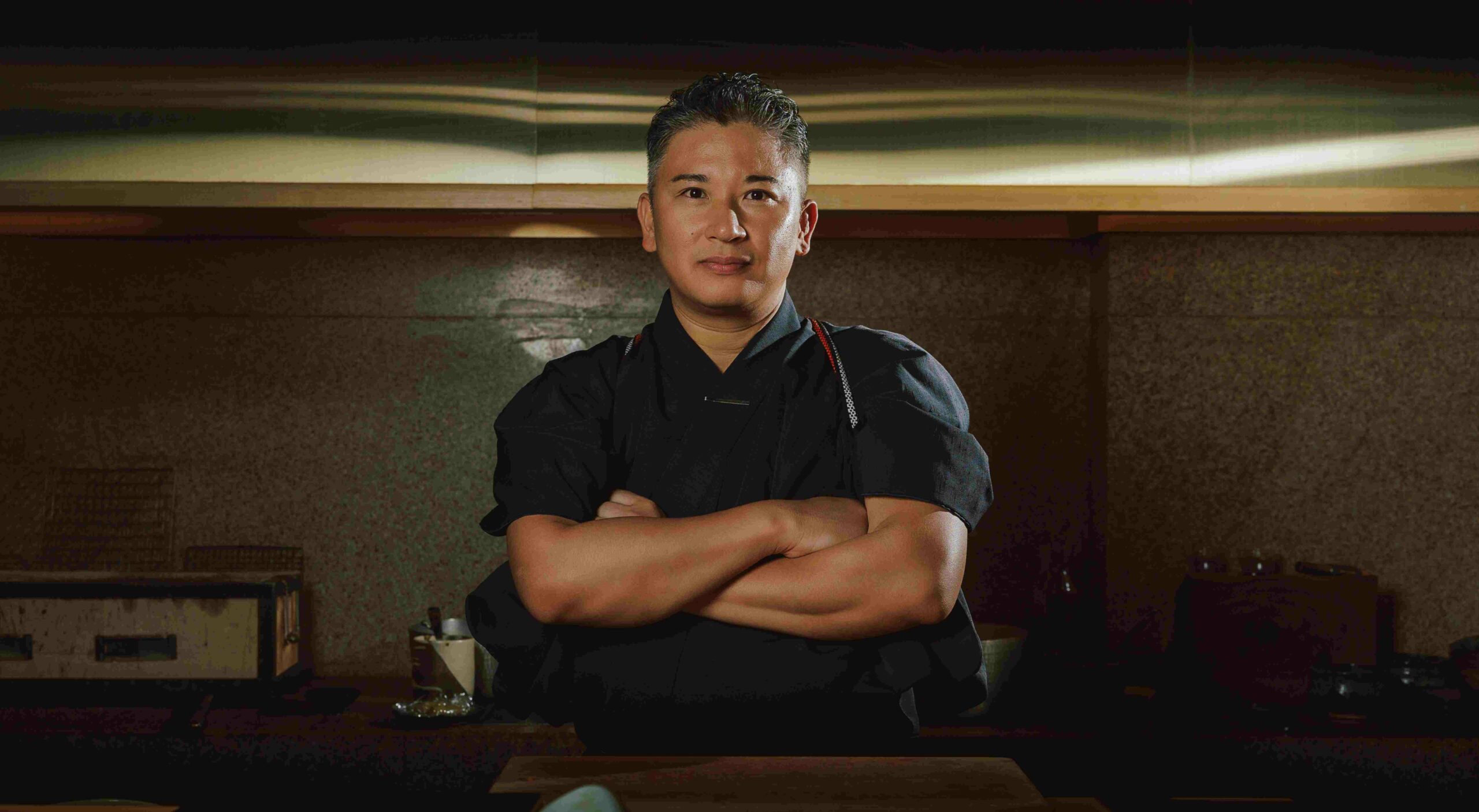We aren’t able to enjoy an afternoon tea filled with champagne and blinis just yet, but here’s to hoping
Caviar is widely considered to be the Rolls-Royce of ingredients. Apart from being a hallmark of haute cuisine, it has also found its way to be an ingredient in luxury skincare products. Year after year, it tops the list of most expensive ingredients, going neck and neck with saffron.
But how have fish eggs – and we aren’t talking about tobiko or ikura – become such a highly coveted delicacy, and what makes them so? We answer your burning questions, beginning with the basics.
What is caviar?
Caviar is unfertilised eggs that are harvested exclusively from the sturgeon family of fish and then salt-cured.
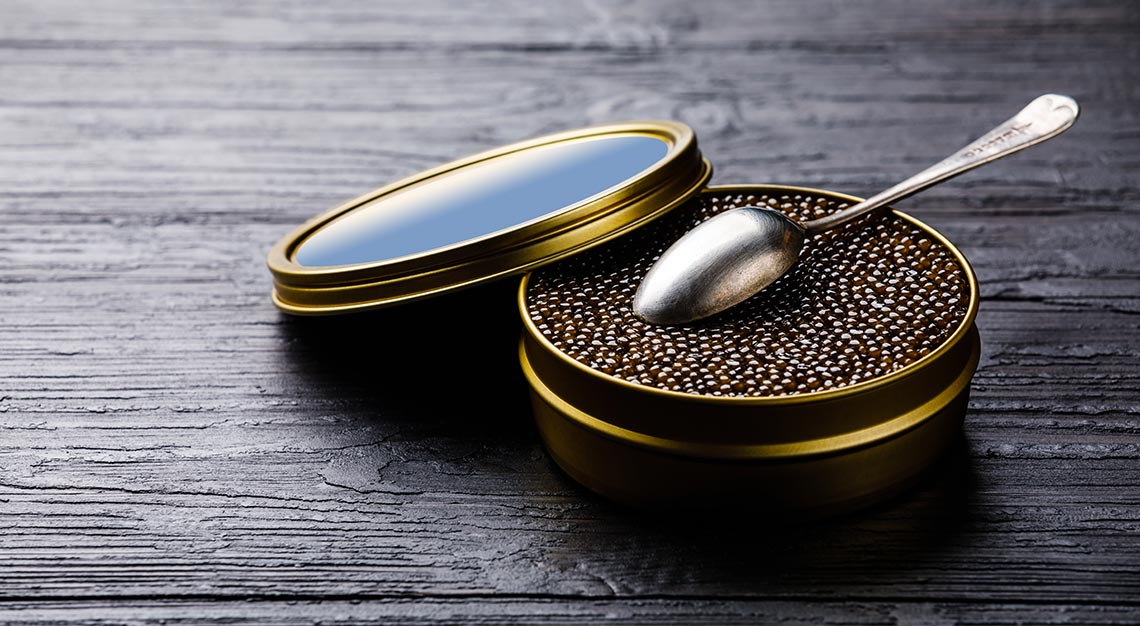
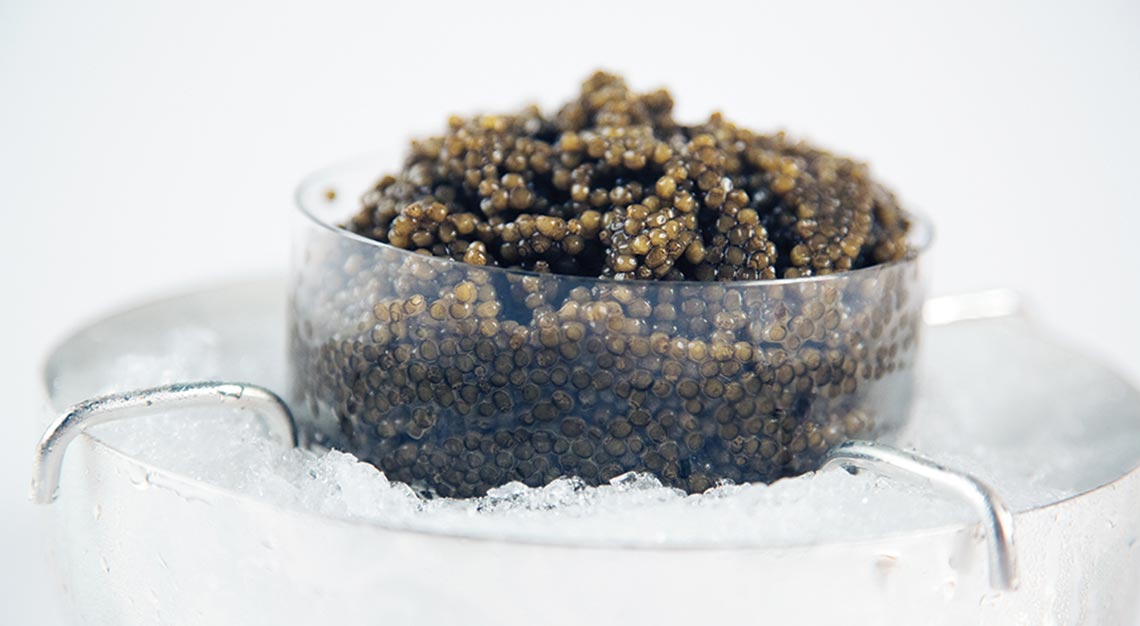
What are the different types of caviar?
There are many different species of sturgeon which produce their own unique type of caviar. According to Ilya Panchernikov, the managing director of Caviar Russe (a high-end Madison Avenue restaurant which specialises in caviar), the three species of sturgeon which made caviar famous were beluga, osetra and sevruga.
“Beluga was always considered the best because of its rarity and size, followed by osetra and sevruga,” Panchernikov says. “In addition, there are other caviar producing sturgeons, including the Pacific sturgeon and Siberian sturgeon.” If that’s not enough, there’s also a myriad of hybrids being produced – beluga x Siberian, Chinese hybrid (dauricus x schrenki) and osetra x beluga, to name but a few.
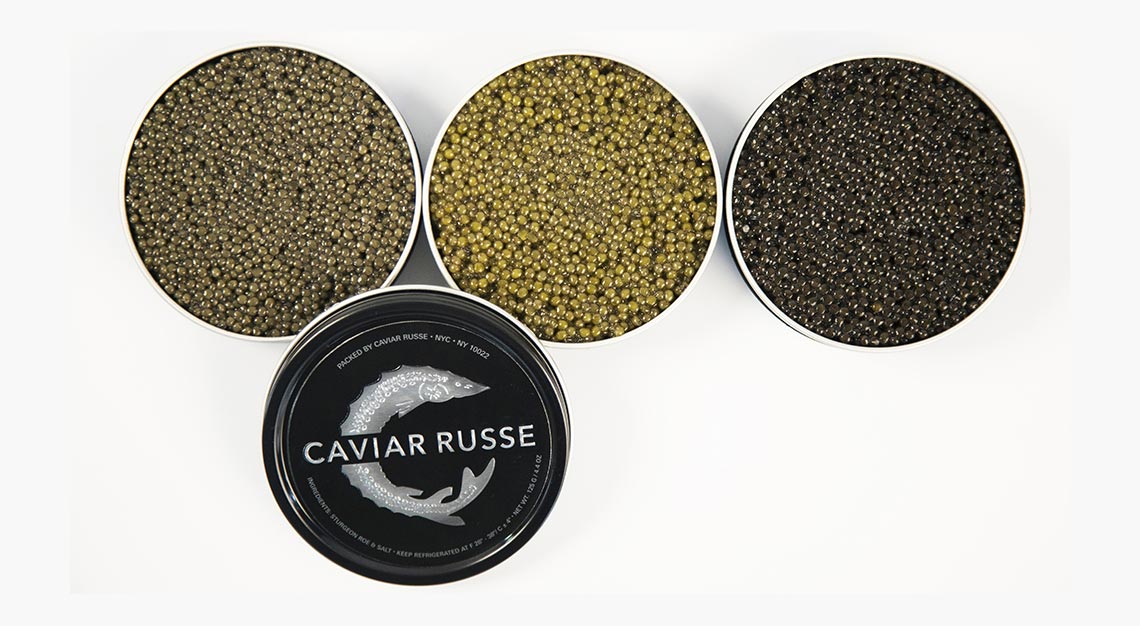
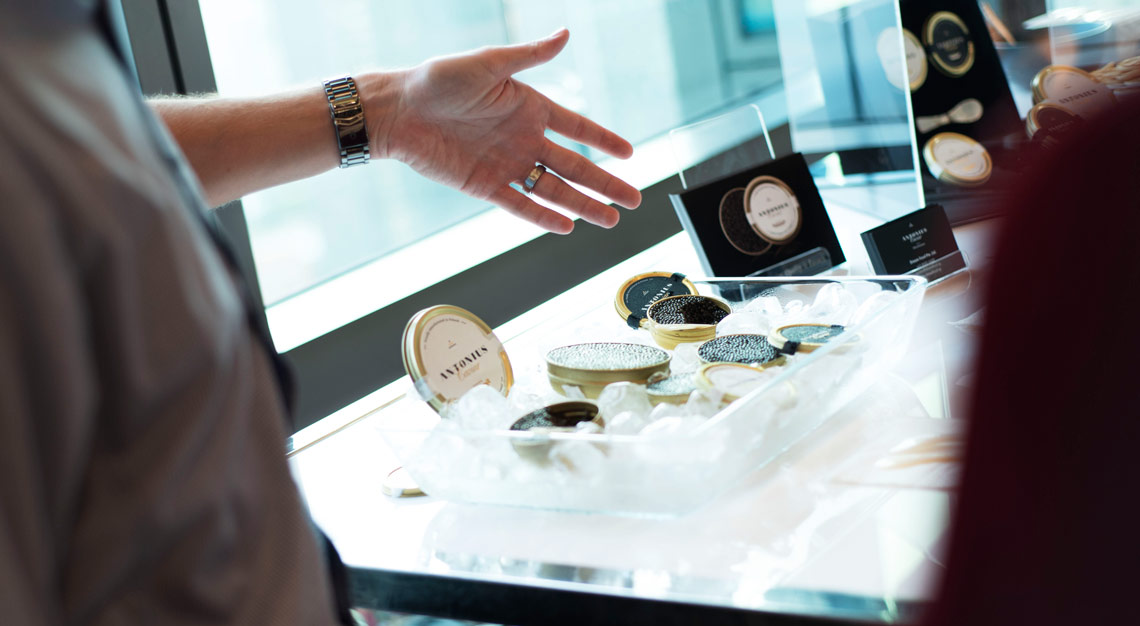
Does the colour matter?
No. Some prefer silvery hues, others, golden, and for most, a translucent black. The colour corresponds to the variety you’re having, so it’s important to check and know what you’ve ordered. As a gauge, sterlet is usually gold, osetra looks brownish-grey, Sevruga has a light-grey hue, while Beluga ranges from silver to jet black. Some caviar – such as lumpfish – are commonly dyed red or black.
Where is caviar produced?
Until just a few decades ago, caviar was harvested from the wild sturgeon swimming in the Caspian and Black seas. Today, most of the world’s caviar is being farmed across across the globe, from China to the Middle East to Madagascar.
According to Rod Mitchell, president of Browne Trading Company, what matters more is how caviar is produced. “The most reliable places to buy caviar are not areas but reputable farms,” Mitchell says.
Some companies have been known to ship their caviar to a different country and have them marketed and sold. Why? It’s due to the difference in perception of quality. For example, Russian has always known as the producer of the ‘best’ caviar, putting aside the fact that taste is subjective. Purists may however disagree and say that if it’s not from Russia, it isn’t caviar; an argument that bears nearly as much weight as the origins of Champagne or Port. However, China is responsible for 60 per cent of the production of caviar.
In short, caviar can be fishy business, and it’s important to do your research and read up on the supplier, beyond what the tins say.
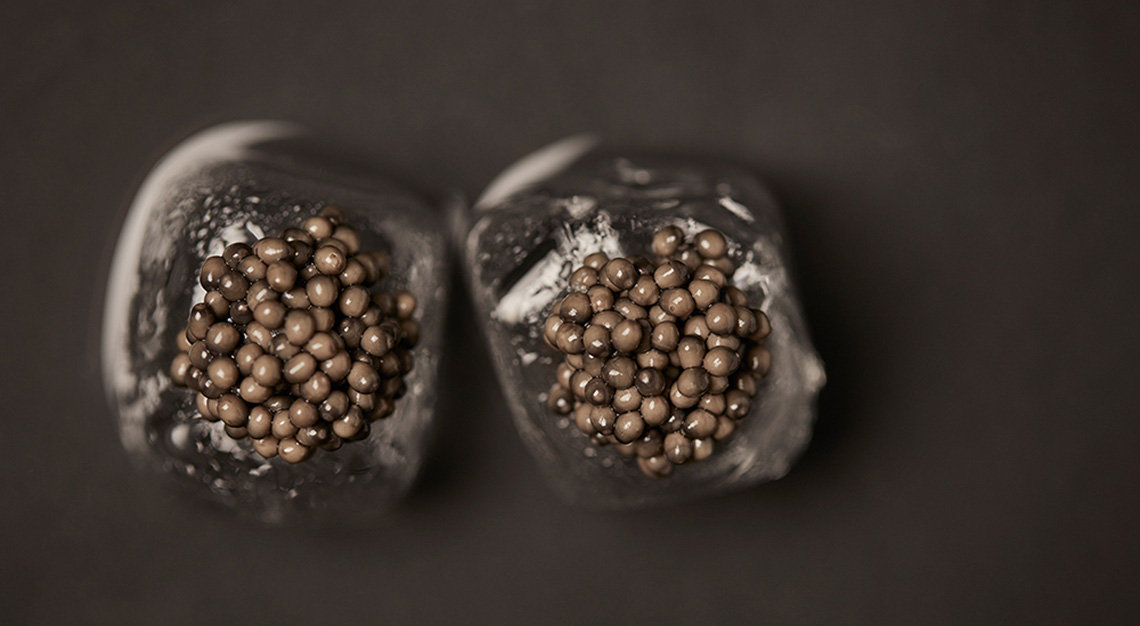
What’s the difference between farmed and wild caviar?
The main difference is taste. A fish’s diet and environment contribute greatly to the flavour of the caviar it produces – how briny, rich or buttery it is. Wild fish have a diet that is eclectic and varied, hence their roe has a more complex flavour. Conversely, farmed sturgeon have a controlled diet, which results in consistent quality and uniform taste. Panchernikov says wild and farmed caviar have a similar taste, “but wild caviar would most likely have a greater intensity overall.”
Does price matter?
This depends on who you ask. At one point in time, Russia had an oversupply of caviar, making it affordable to the masses. And now, with the influx of farmed sturgeon, the price of caviar has dropped substantially.
Generally, you can expect to fork out around S$130 for 30g of premium caviar. But you get what you pay for. “Cheap caviar is usually inconsistent, old, soft, salty, or just plain awful,” Mitchell says. The higher-end caviars also have much larger sacs, compared to cheaper ones which have a small, slightly sandy texture. In 2018, it was reported that a fish farm in Austria sold white gold caviar for €100,000 (S$156,000) per kilogram, working out to about €3,000 (S$4,688) per 30g.
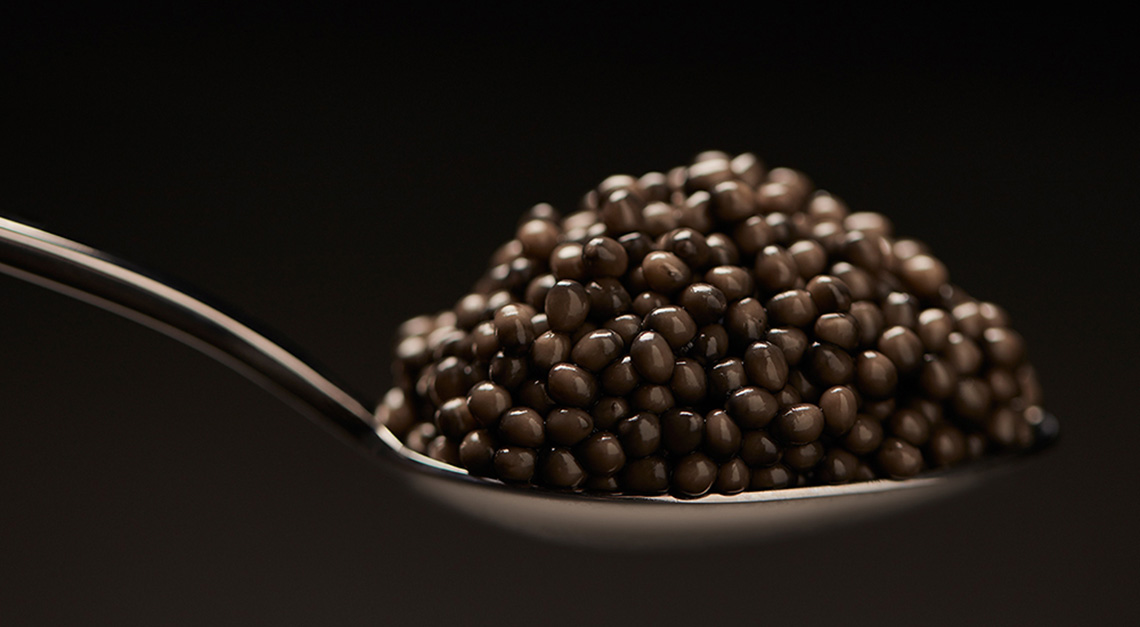
How long can caviar be kept for?
That depends on the shelf life of your tin. Caviar doesn’t need to be refrigerated until you chill it prior to serving. When you do so though, keep it in the coldest part of your fridge, which is usually at the bottom part, and right to the back. Heat rises, and items closest to the fridge door are most susceptible to temperature fluctuations. An unopened tin can be stored in the fridge for up to two weeks. Once opened, consume it within three days. That’s because caviar gets saltier as it ages. Freezing isn’t recommended, as it’ll toughen the sac’s membrane and alter the flavour. As each brand recommends a different way of storing, follow the instructions for best effect.
How can you tell good from bad caviar?
More than 20 years ago, Mitchell and acclaimed chef Daniel Boulud came up with a grading system – known as “The Three Ts” – to assess caviar. 1) Taste: there should be no bitter, salty or unpleasant flavour; 2) Texture: The eggs should be firm enough that you can separate them with your tongue and they pop when pushed to the roof of your mouth; 3) Tone: They should have a clean colour with a nice glisten. Panchernikov adds that good caviar should have low salinity, a rich buttery flavour and leave no after taste. “A good rule of thumb is to treat caviar like oysters. If it tastes wrong it’s probably either old or poor quality,” he adds.
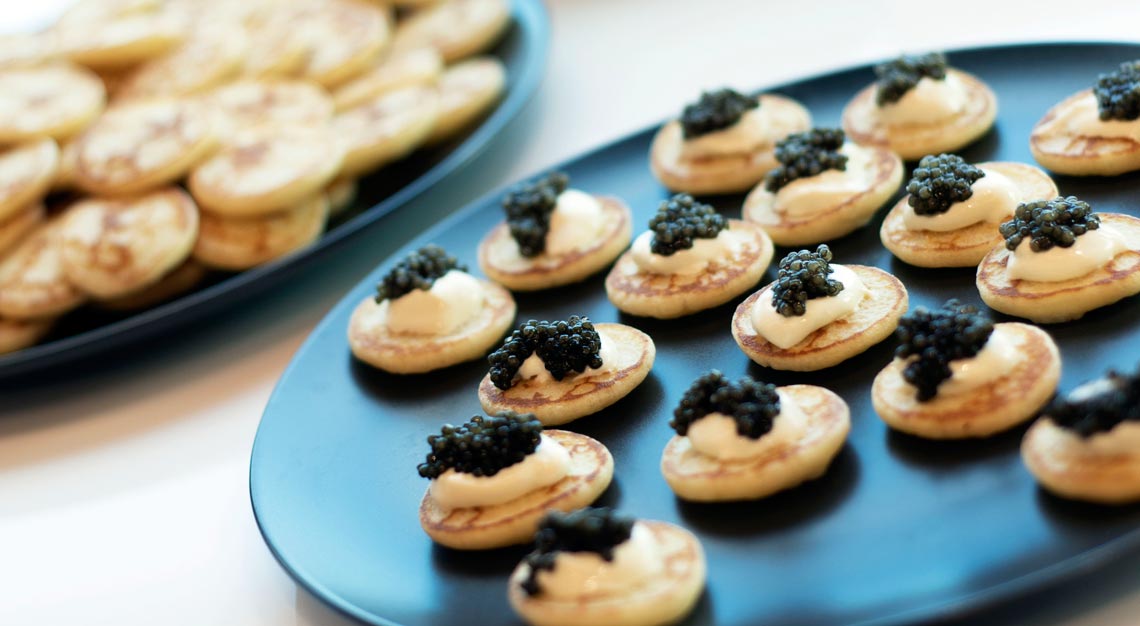
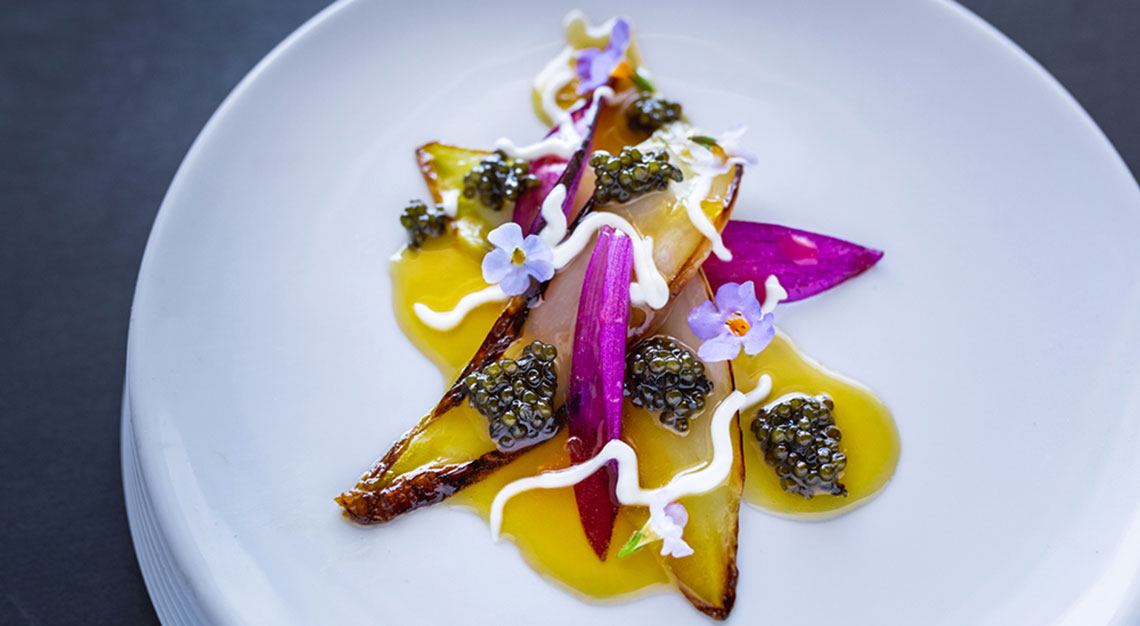
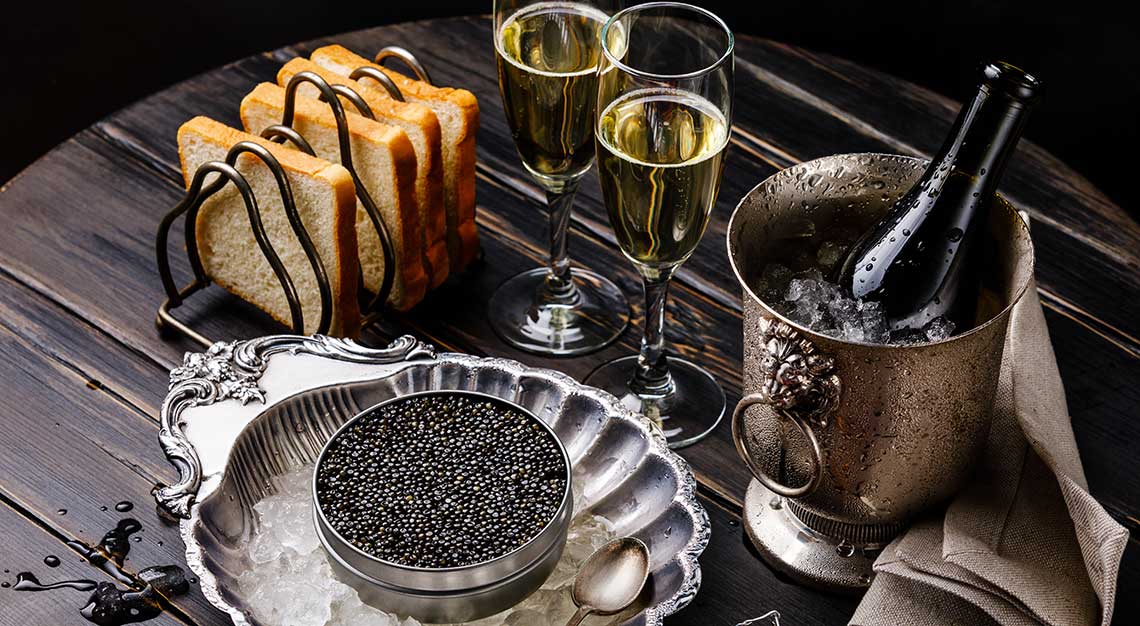
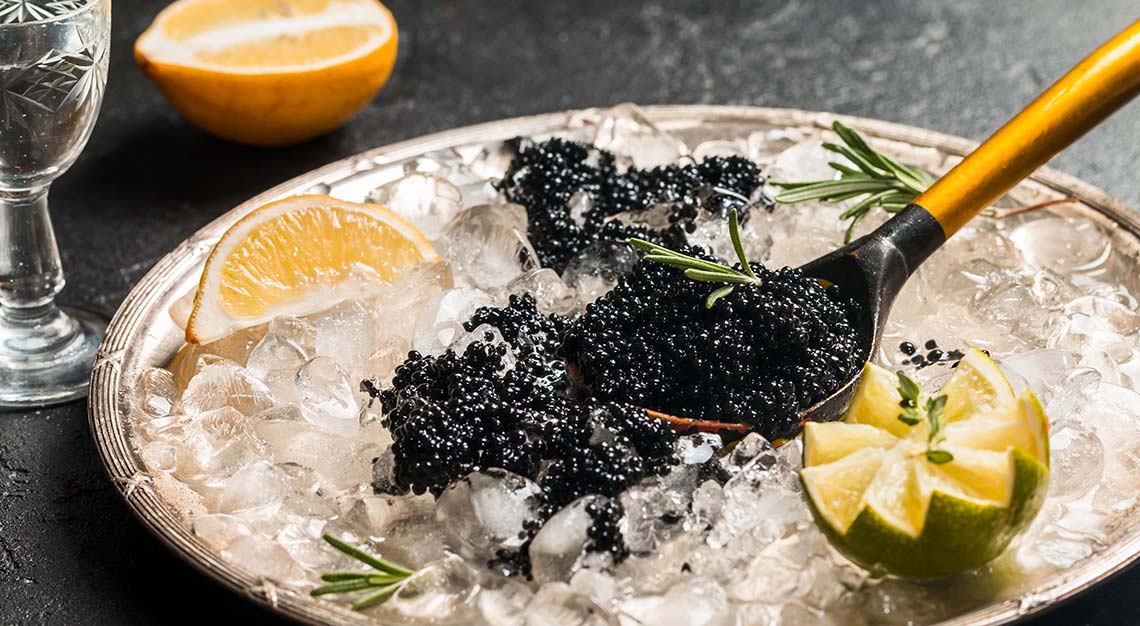
What’s the best way to enjoy caviar?
Lauded French chef and long-time caviar enthusiast Eric Ripert – who even had his own exclusive caviar line at one point – says “good quality caviar doesn’t need too much to be enhanced.” Purists will simply dollop caviar on the back of the hand with a bone or mother-of-pearl spoon – avoid using metal utensils as they may oxidise caviar – or pile the roe high atop a warm blini along with a smattering of crème fraîche. The Le Bernardin chef says he likes to serve it simply with Pullman white bread.
That’s not to say the delicacy is limited to this type of preparation. Ripert himself has served roe-packed croque monsieurs and caviar-embellished wagyu. And his Michelin-starred contemporary Jean-Georges Vongerichten approaches caviar in a similar fashion. “We serve caviar in many different ways, from simple melba toast or warm blinis to my egg caviar and caviar creations,” the chef says. Vongerichten’s inventive creations see the ingredient paired with lemon gelee, egg toast, warm potatoes, tapioca, yogurt and herbs.
Of course, experimenting with roe is not a new phenomenon. Ripert recalls working in the kitchen with Joël Robuchon in 1983 and incorporating caviar in a bunch of eclectic recipes – but since the delicacy is becoming somewhat democratized, it’s being featured on a lot more menus. “Because the price of caviar has dropped dramatically, more and more chefs are using it in their cooking,” Ripert says.
The influx of sustainable and ethical farms has also contributed to the rise in popularity. “It is still an expensive item but now it’s a lot more accessible as there are farms everywhere,” Vongerichten adds.
